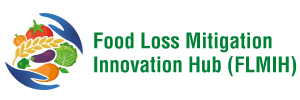
Project Description
Damages that reduce the quantity or quality of fruits and vegetables can occur during any stage of the supply chain and affect the associated income opportunities for the actors of the supply chain. One of the main challenges faced when designing targeted interventions to reduce these losses is the lack of detailed data to quantify this loss, especially in low-and middle-income countries. On the other hand, in the existing studies on fruit and vegetable loss, there is an unbalanced focus on different stages of supply chain and losses of different vegetables and fruits. Vegetables like tomatoes are most of the time neglected in many studies in Sri Lanka although they show high values of losses throughout the phases of the supply chain. On the other hand, retailers are the actors located towards the end of the supply chain, therefore large environmental and economic impact has been generated in production, transportation and packaging during the journey from farmer to retailer. Therefore, losing the produce at this stage results in heavy burden to the economy as well as the environment.
Thus, a better understanding of the losses at the retailer level has the potential to aid in formulating effective loss reduction strategies for the whole supply chain.
In addition, most post-harvest-related studies state that these losses are preventable through proper training, adoption of proper technologies and effective handling practices and even market-related improvements. However, it is common knowledge that food losses cannot be eliminated entirely.
Therefore, it is important to identify how much of the total food losses are actually avoidable at each actor level as many prior researches on this field especially in Sri Lanka have not focused on this aspect.
Food loss reduction can be considered as a complex process that requires a multidisciplinary approach that should consider technological, scientific, infrastructural and socioeconomic elements. Although many strategies and interventions have been implemented by the authorities to reduce losses of fruits and vegetables, especially at the wholesaler and retailer level, the fruit and vegetable losses in Sri Lanka do not seem to reduce to a satisfactory range. Therefore, it is important to identify why these strategies were unable to reduce the losses by a significant quantity and identify what factors motivate people to reduce the losses.
Therefore, this study aims to quantify the tomato losses and identify the avoidable and unavoidable components of the total loss at retailer level. It explores the effectiveness of different strategies to reduce food losses using tomatoes in the operational process at the retailer level.
Key Findings
Policy Implications
- Identification of the presence of retailer groups who are not concerned about food losses highlights the need for emphasizing the monetary losses associated with tomato losses when designing loss reduction strategies to motivate the retailers into adopting the introduced practices.
- Findings warrant further studies to explore and obtain a comprehensive understanding of practices employed by actors of each level of the supply chain, to develop targeted strategies for individual supply chain actors to reduce tomato losses.
Publication
Lokuge, R.T.D. (2024). Behavioral Strategies to Minimize Losses; Impact of Information Provision and Nudging on Tomato Loss Reduction at Retail Environment. Research Project Report submitted as the partial fulfilment of the BSc degree in Agricultural Technology and Management, Faculty of Agriculture, University of Peradeniya, Sri Lanka.
Lokuge, R.T.D. (2024). Unravelling Fallacies about Tomato Food Loss at the Retail Level. FLM Briefing No 2. ACIAR Food Loss Mitigation Project. Institute of Policy Studies of Sri Lanka. Colombo.
